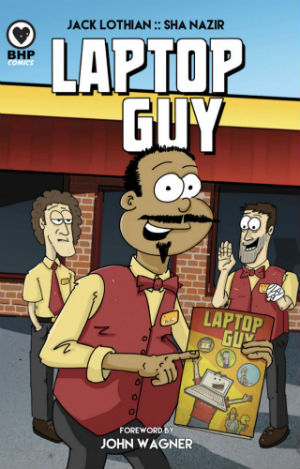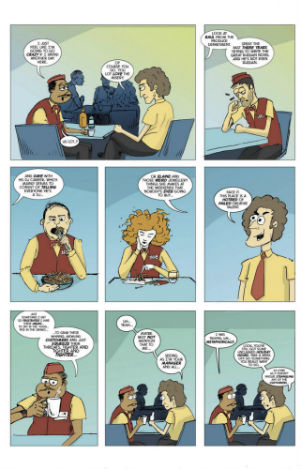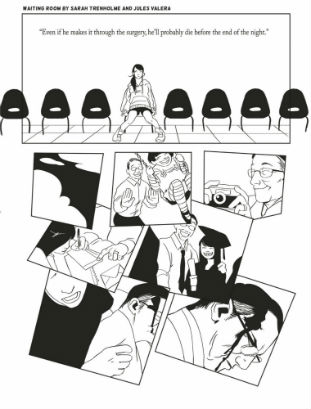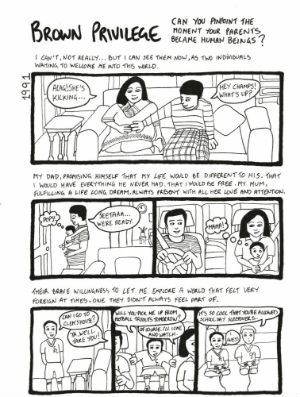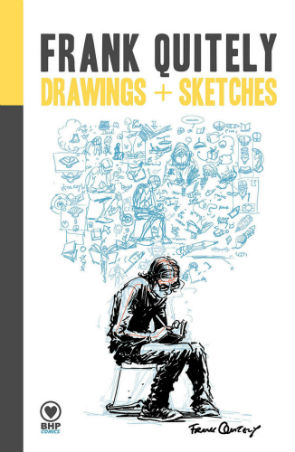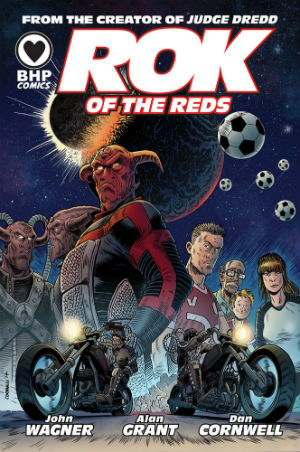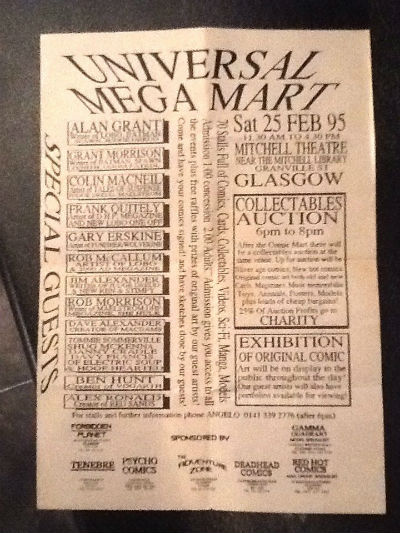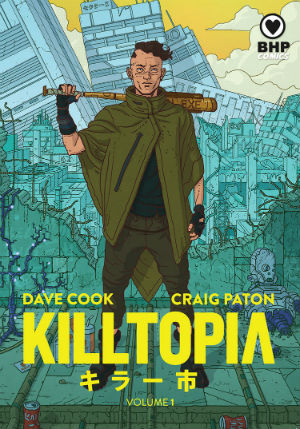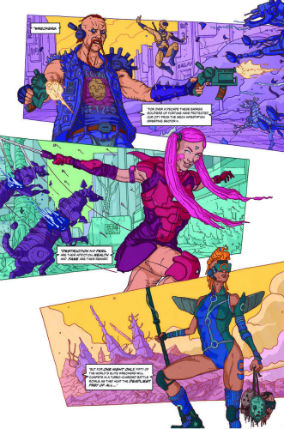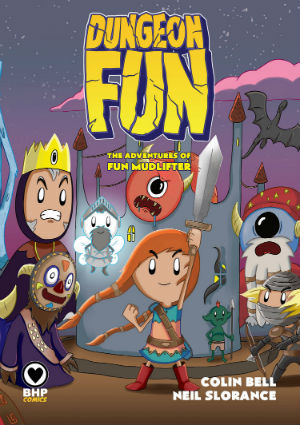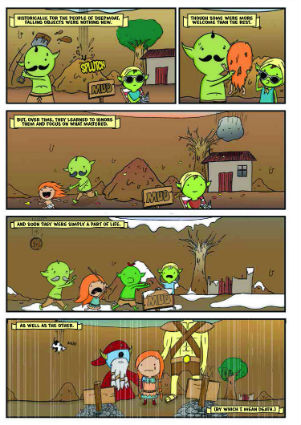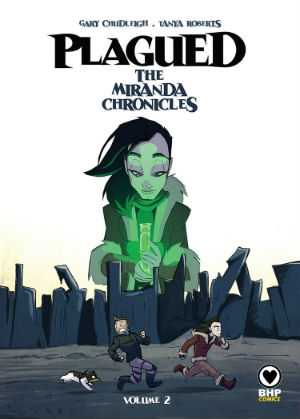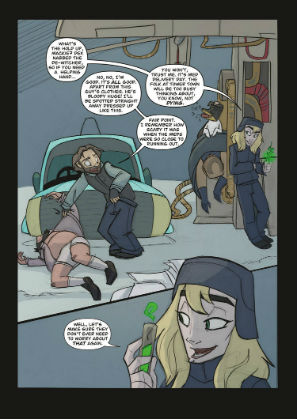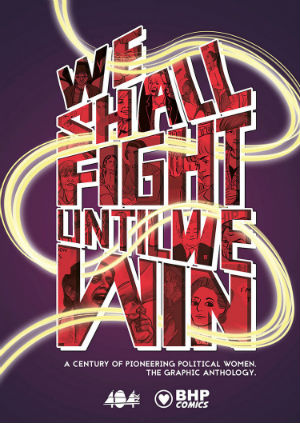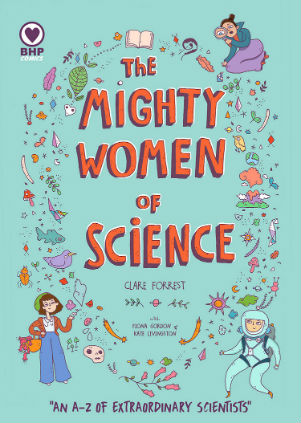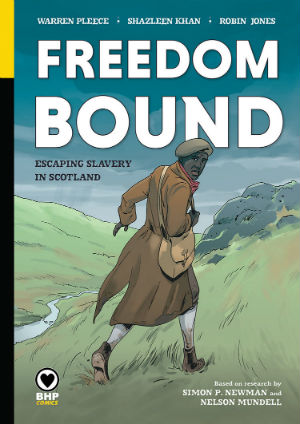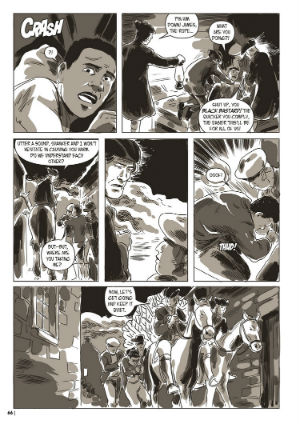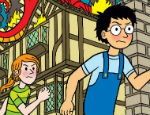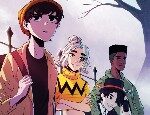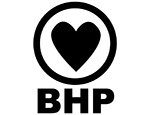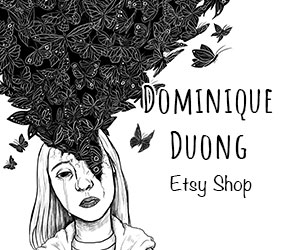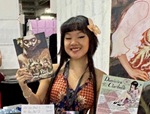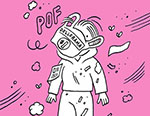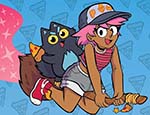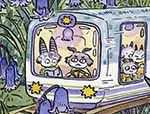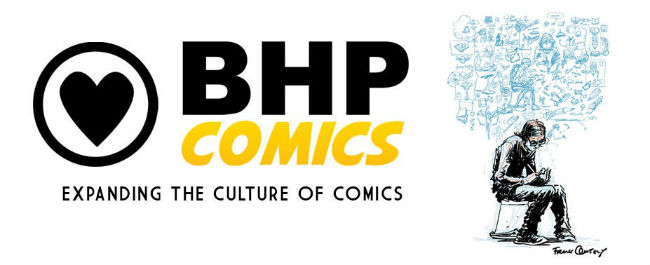
For the best part of a decade, Scotland’s BHP Comics have been growing from a small self-publishing concern to the eclectic and socially conscious outfit they are today. With a graphic novel catalogue that ranges from genre fiction (Plagued, Rok of the Reds, Dungeon Fun) to social commentary and biography (We Shall Fight Until We Win, Freedom Bound, The Mighty Women of Science) and a role in the wider Scottish comics scene as organisers of events like Glasgow Comic Con, they’ve established themselves as one of the most important players north of the border.
I catch up with BHP publisher Sha Nazir (below right) today to chat about BHP’s origins, working with British comics legends, and their role in providing a creative platform for emerging BAME talents…
ANDY OLIVER: Tell us about those very early days of BHP Comics back when you were Black Hearted Press and how you gradually evolved from self-publishing comics to becoming a fully-fledged, distributed publisher?
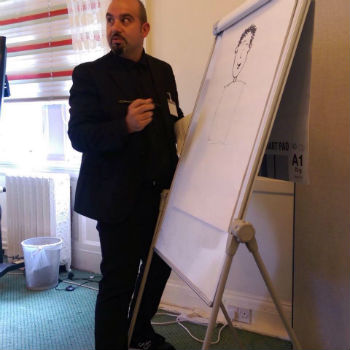 SHA NAZIR: We started out (as Black Hearted Press) just wanting to make a comic. It was initially John Farman, Dave Braysher and myself. Dave had drawn his own comic called Black Maria, but had no actual story or text, so John wrote around the pictures and made a story from it. The guys brought me on board to help package it, as neither of them had any experience in design. So I coloured the covers, did the design work, flatplan, scanning, lettering and sourced a printer (all the grunt jobs). It was Dave’s comic, so while I was making up the cover, which was a throwback to ’60s DC, I asked if he wanted to put a logo/label on it, and he came up with Black Hearted Press, and from there I designed the first incarnation of the logo.
SHA NAZIR: We started out (as Black Hearted Press) just wanting to make a comic. It was initially John Farman, Dave Braysher and myself. Dave had drawn his own comic called Black Maria, but had no actual story or text, so John wrote around the pictures and made a story from it. The guys brought me on board to help package it, as neither of them had any experience in design. So I coloured the covers, did the design work, flatplan, scanning, lettering and sourced a printer (all the grunt jobs). It was Dave’s comic, so while I was making up the cover, which was a throwback to ’60s DC, I asked if he wanted to put a logo/label on it, and he came up with Black Hearted Press, and from there I designed the first incarnation of the logo.
We then took our comic to the Bristol Con (2010 or 11), and stood around awkwardly, without a table (because we had no idea what we were doing), and just showed our comic to a few people who smiled politely and patted us on the back. Off the back of this, both John and I started working on our own comics, John did a horror series, and I made my own B&W funny book, Laptop Guy (unrelated to the GN I brought out years later), this was one and two page shorts, kinda like Too Much Coffee Man. We made these and decided as a group we’d put the same label on all of them, I then set up Glasgow Comic Con (2011) and used it as a way for us to promote our own books and the idea of a comics label.
So that’s where it all started really, and we did that for 2-3 years, Jim Alexander came on board for a year then went off to set up his own label, as we were evolving, I wanted to start to make other people’s comics, John and Dave we’re both very much focused on their own creator-led stuff, so moved on to set up their own things as we all had very different ways of wanting to make comics and ideas about content. By now (2015) Black Hearted Press was interlinked with Glasgow Con and we had a couple of comics titles that were in development (we were still making floppy comics at this point). So as things moved along, I decided to spend some more time in trying to build it as a business in 2016, which is when I started learning about book publishing and dropped Black Hearted for just plan BHP Comics, the logo, is still the essence of the original, just dropped the bullet holes and when folk now ask what it means, we go with our new slogan, Bold Heart Publishing.
Laptop Guy by Jack Lothian, Sha Nazir and Colin Bell
AO: From the work of UK comics legends to community-based projects featuring first-time creators, and from genre comics to socially conscious sequential art, BHP’s output is refreshingly eclectic. How would you describe your publishing ethos and philosophy?
NAZIR: A bit mad hatter! There’s two strands, to what I’m doing I guess, on the one hand I’m selecting books that I like, but beyond that, I also have to like the people making it, because publishing with BHP is a partnership, we’re tiny, UK comics is tiny, so we have to both get on board to push that product forward. And secondly, I’ve opened some doors and I’m leaving them open for other people to come through, now that I’ve done that, I’ve used it to make books that aren’t particularly commercial, but they are planting seeds to help change the landscape of who is making the works, and what the works are about.
AO: Who makes up the BHP team?
NAZIR: It’s mostly me (’cause I’m cheap to hire), but I spend 3 days a week on BHP, then work on other freelance gigs and projects. Jack Lothian is a full time TV producer/writer, but lends his knowledge and editing skills whenever we need them. Nicola Love manages Glasgow Comic Con (1 day a week), Kirsty Hunter is our freelance designer/editor, ad hoc, when required, and Gary Chudleigh, freelance creative producer for IP, Film/TV development. In addition we hire freelance booksellers and event staff when needed.
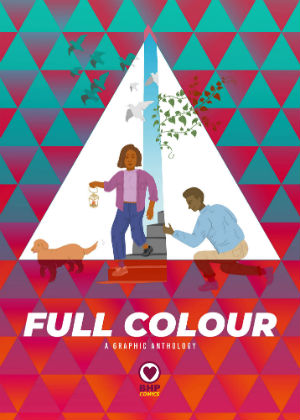 AO: Last summer we both sat on panels at the Cartoon Museum in London when you spoke about representation in comics and how BHP was working on initiatives in that area. Can you talk about the Full Colour programme, the corresponding anthology, and its aims in nurturing grassroots BAME talent?
AO: Last summer we both sat on panels at the Cartoon Museum in London when you spoke about representation in comics and how BHP was working on initiatives in that area. Can you talk about the Full Colour programme, the corresponding anthology, and its aims in nurturing grassroots BAME talent?
NAZIR: The project came off the back of me getting into the publishing industry a little more; you have to understand that making comics in the book world I’m already an outsider, compound that with being a person of colour. I was stood in a room for a Scottish publishing event with 200 people, as well as being the only comic person, I was the singular person of colour in the whole room, a minority within a minority. And I just said to myself, “this is not on, how can this be?” I fell into publishing by accident, and I’m in my 40s, “where are all the new young voices?”
So I actioned a project plan, and applied to Creative Scotland and Event Scotland for funding, we got some of the money to make part of the project work and the rest I pieced together. The hardest bit was identifying those young people and then it was a matter of lined everything up, the conclusion of having a physical anthology was a by-product to the root of the project, which was about building confidence, self-belief and planting seeds for those young people who are good enough and may one day take up creative industry jobs and might go back to dabbling with comics. The project’s legacy will be 5 years down the line. Sadly we weren’t successful in phase 2 funding; we’ll try again, but the time and money to go through the process can be a challenge.
Comics from Full Colour (edited by Nyla Ahmad) by Sarah Trenholme & Jules Valera (left) and Natasha Natarajan
AO: Socially aware comics like We Shall Fight Until We Win, Freedom Bound and The Mighty Women of Science have been a staple of your publishing catalogue. What is it in this context about comics as a form that makes them such a powerful medium for communicating ideas and sharing personal experience?
NAZIR: Much like film, comics can punch with its impact a little quicker than just the written word, especially in our visually trained society today. When dealing with subjects that are more complex or difficult to convey, comics works really well in helping get messages across.
Frank Quitely: Drawings + Sketches from BHP plus science fiction meets football in John Wagner, Alan Grant and Dan Cornwell’s Rok of the Reds
AO: In terms of the big name draws in your publishing catalogue Frank Quitely is one of those that obviously stand out. As do the names of John Wagner and Alan Grant (with artist Dan Cornwell) on Rok of the Reds. How did your collaborations with those UK legends come about?
NAZIR: I met John through him being a guest at our second Glasgow Comic Con, he had such a nice time he came back the following year, and we sort of hit it off eating and drinking together. John had a project he was going to self-publish and was asking me about the process. I suggested we could add it to our label, (this was at the point we’d just taken our first comic by someone else to make and the other guys were about to leave shortly after this). Rok wasn’t the first book John put on the table, there were a couple of others and one which Carlos [Ezquerra] was originally signed up for, followed by Ian Gibson before the final iteration of Rok appeared with Dan’s great style.
Frank Quitely, I actually met when I was 18 and he had just started out, he’d come off of Electric Soup and started 2000 AD. I had organised my second ever comic fair (with guests, see pic above), which was basically a comic con, but I didn’t know that at the time. I then went away from comics and didn’t reconnect until 2011, when I ended up sharing the same studios as Frank and our friendship grew from there. A lot of it is to do with timing and being in the right place at the right time.
AO: You’ve moved away from single issue comics to collections and graphic novels. In an ever volatile and evolving marketplace do you believe that’s the future for genre comics like Killtopia and Plagued: The Miranda Chronicles?
NAZIR: Yes, I do, certainly for UK-made content. It’s basically impossible for a mainstream UK publisher to make floppy monthly comics in the UK. I didn’t know that at the time of going national with Rok. I learnt the hard way. But that lesson is what prompted me to move out of comics and into making graphic novels/albums for the book industry.
And Killtopia and Plagued are both good examples at opposite ends of the spectrum. We’ve brought out small, self-contained volumes and will eventually reformat into a complete book edition. Shelf life of your back list is the life blood of a small publisher.
Dave Cook and Craig Paton’s dystopian cyberpunk fantasy Killtopia
AO: One of the biggest hits of the small press world in recent years has been Colin Bell and Neil Slorance’s Dungeon Fun. With Fun Mudlifter coming to BHP are you looking to take her adventures to whole new international audiences?
NAZIR: Yes, DF is well known amongst core comics-focused buyers in Scotland, but we have lots of scope for that book in England and London, and it’s one of the books leading the charge in the USA, currently stocked in 180 Barnes and Noble stores. We really hope that book takes off. It deserves to, not just for the creators, but because Fun is such a great character, and it’s such a smart book. It could be a dog man, if we get it in the right hands.
The madcap humour of Bell and Slorance’s award-winning Dungeon Fun
AO: You don’t just publish comics you also organise events that promote the medium like the upcoming Glasgow Comic Con. How do those two strands of your comics activism inform and complement each other? And how have the conventions developed over the near decade you’ve been running them?
BHP was intrinsic to Glasgow Comic Con, the two have fed off each other since day one. I created Glasgow because a) I’d made a comic and wanted to sell it somewhere and b) there hadn’t been a con in Glasgow in over 15 years, and the only one that took place in Scotland that whole time was Hi-Ex for 2-3 years. And as Glasgow grew, BHP grew. Glasgow helped fund some of the books and in turn Glasgow gave us a great platform to sell our own books to people who wanted to read and buy comics, and that never really changed. Glasgow is a big public engagement event, a giant workshop of comics.
The scene has changed dramatically, after year 3 we were still very green and were gonna expand, but MCM moved into our patch and opened up the market even more. With the growth of Deecon, Edinburgh Con and Granite City an explosion of great, local run shows happened; our plans for running a Scotland Comic Con in Edinburgh were put on hold as we had to ride out some bumpy years. At first, many people thought our event would be threatened, but I’d always said, yes the quality of shows can vary and the content and use of comic con can be watered down, but much like going to a gig, there are many shows happening at once. The public need a little education but they’ve grown a lot over the past few years. And just going to any comic con, is an activity similar to going to any gig and people go to more than one.
When a deadly plague wipes out most of the world’s population witches become the scapegoats in Gary Chudleigh and Tanya Roberts’s Plagued: The Miranda Chronicles
So there’s plenty of room for all sorts of cons to happen. I’m especially pleased that Dunfermline Comic Con appeared, bringing a very similar model to Glasgow and having another great comics focused show in Scotland is much needed. We also run a second event, ECAF, Edinburgh Comic Art Fest, now in year 4 and going into shows 6 and 7. It’s pure comic authors only, maybe 40-50 exhibitors across about 30 tables, a totally free event and we now run it twice a year. In August as part of Edinburgh International Book Festival and November as part of Book Week Scotland. They wash their faces as events, but they do a great thing of engaging lots of new readers who don’t attend comic cons. The next one is Aug 11, held at the French Institute on the Royal Mile.
AO: As you’ve grown as a publisher over the last few years how much of a learning curve has it been? What have been the particular challenges in building up a readership and getting your books out there? And, conversely, what have been some of the highlights in that time?
NAZIR: The main challenges have been distribution, cash flow and getting reviewers to write about the books. The learning curve has been immense. I don’t have a publishing background so I had to learn all about it on the go, how the book world works, how that compares to the comic industry, where the crossovers were and how could I mould all of this into something which would help us. And it’s only really happened in the past two/three years.
We’ve only been on the high street shops in the UK since April 2018, so we have a looong way to go and lots more challenges. How to finance our next books is a big thing. How do we keep the pipeline moving forward now that we have all of the networks in place? And marketing into a new territory, the US and Canada; our books are there, we don’t know the market, and have to rely a lot on sales teams out there.
Highlights have been us opening doors and helping legitimise comics in the book world a bit more. We’ve been shortlist for Saltire Awards two years in a row and we’re highly commended in the inaugural British Book Awards, best small publisher for 2018, and getting 12,000 copies of our book Freedom Bound into every high school in Scotland is pretty cool. If BHP ended tomorrow, I’d be very happy with its legacy and knowing that we have that book being read by 250,000 young people over the next 5 years is kinda awesome.
AO: You’ve spoken about developing content for film and TV. Is there anything you can tell us about where that may lead in the future?
NAZIR: I can’t tell you a lot just now TBH, but we’ve been prepping some of our books for TV/Film treatments. We have pitch bibles made for some and we started pitching in earnest back in Feb. It’s a whole new world, lots of networking and learning the language of the industry, all very new to Gary Chudleigh and I. Gary’s the author of our YA series, Plagued (Vol. 3 out in August). He’s also taken a freelance, shareholder role as our Creative Producer leading on the TV/Film stuff. We’re also developing IPs for TV and animation that BHP owns 100% of and we might make them into books, if there’s interest. So there’s lots ticking along. Why are we doing this? Ultimately, there not very much money in making books, so we have to diversify our income options now that we have a portfolio of books.
Freedom Bound by Warren Pleece, Shazleen Khan and Robin Jones
AO: And, finally, where can we expect to see you in 2019 in terms of festivals and conventions, and what can we look for from you in terms of new releases this year?
NAZIR: We’ve got 3 of our own shows this year, Glasgow Comic Con June 29, ECAF at book fest Aug 12, ECAF at book week Scotland Nov 25. In addition, we’re taking booths at MCM London, Scotland and Birmingham, we exhibited at Comics Salopia, and will be exhibiting at Granite City, Cmyra Fest, TBubs, plus we have events TBA at Edinburgh book festival and a couple of other festivals TBA. Book-wise, Dungeon Fun just dropped 1 June, then we have Rolled a One by Chris Baldie and Plagued Vol. 3 both out in August, followed by Killtopia Vol. 2 out in October. And then we have a new thing I’m doing, which will be the first of its kind in the UK, and I’ll be announcing that in August. It’s good to end on a cliffhanger.
For more on the work of BHP Comics visit their site and online store here. You can also follow them on Twitter here and Instagram here.
Interview by Andy Oliver





